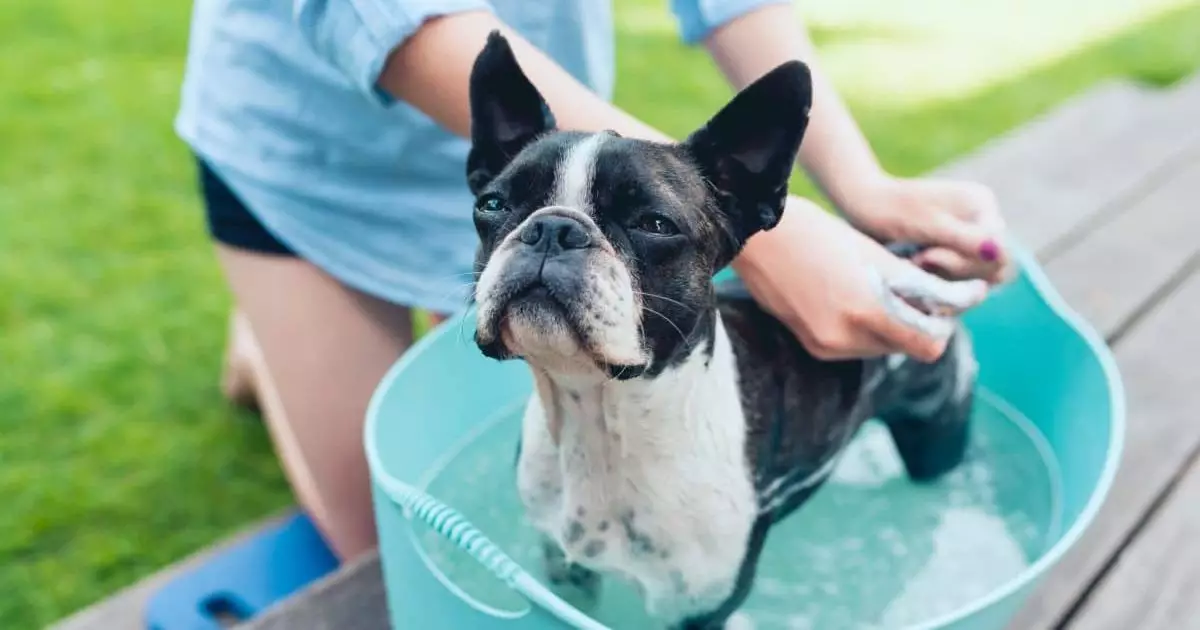The prospect of bath time often instills dread in both dogs and their owners. The combination of splashing water, scrubbing, and, occasionally, slippery surfaces can turn a simple hygiene routine into a stressful event. Many dogs harbor an aversion to water, not purely because they dislike getting wet, but due to the unfamiliar sounds, sensations, and disruptions to their established routines. However, it’s essential to approach this challenge with a strategy that fosters comfort, trust, and positivity.
One needs to recognize that negative associations with bath time can accumulate over time, making it critical to reset your dog’s perception. This process involves more than simply running water and sharing a shampoo bottle. It requires understanding your dog’s psyche and addressing their concerns with empathy and creativity.
Creating Positive Associations with the Bath
The first step in reshaping your dog’s bath time experience is to transform the bathing area into a haven—a space of positivity rather than anxiety. Start by introducing non-threatening activities in the vicinity of the bathtub. Feeding your dog their meals or giving treats in the dry tub can create a pleasant association. This method doesn’t just distract; it actively encourages your dog to view the bathroom as a place of reward rather than punishment.
In addition, take time to play together in the bathroom without the pressure of a bath. This might involve utilizing their favorite toys or simply engaging in light-hearted interactions to bolster their comfort level. These preliminary activities help to erase negative assumptions, making it easier for your dog to accept the idea of getting a bath over time.
Adopting a Gradual Training Approach
It’s critical not to rush the bathing process, especially with dogs who are highly sensitive or have developed strong aversions. Instead of imposing the immersive experience of a full bath right away, introduce gradual steps. For those dogs hesitant to enter the bathroom, offer positive reinforcement for simply approaching the space. If they resist stepping into the tub, practice having them get in and out without any water. Always aim to end these short sessions on a positive note, building trust and reassurance incrementally.
Your demeanor plays a pivotal role in the success of this process. Dogs are intuitive creatures and can sense their owners’ tension. If frustration begins to creep in, taking a step back is essential. Return to the last point of comfort for your dog, offering them praise and encouragement to instill a sense of safety. Each successful interaction is a stepping stone towards a more relaxed bath routine.
The Power of High-Value Treats
When it comes to motivating your dog, not all treats carry the same weight. Reserve high-value rewards for bath time training sessions. Small bits of tasty protein, like boiled chicken or cheese, can serve as powerful motivators, gradually associating bath time with something overwhelmingly positive. These special treats should be reminiscent of treats they only receive during these sessions—making them feel unique and highly desired.
As your dog begins to associate bath time with these rewards, you’ll notice a shift in their attitude. They’ll start approaching bath time with a hopeful, eager spirit rather than reluctance. This aspect of reward-based training is crucial in shaping their ongoing behavior and reducing their anxieties.
Environmental Adjustments for Comfort
Comfort during the bathing process is paramount for instilling a sense of security. Water temperature should be a priority; lukewarm is the most conducive for your dog to feel at ease. Avoid harsh sprays or sudden splashes, particularly near their face and ears—these areas are particularly sensitive and warrant a gentler approach.
Moreover, consider the slippery surface of the bathtub. Placing a rubber bathmat or a towel in the tub can enhance stability for your dog, making them feel less wobbly and more secure. This simple change can significantly reduce their anxiety levels.
Also, remember that many dogs may find the sound of high-powered blow dryers intimidating. Utilizing a low-heat, low-noise setting can help alleviate stress. However, if you notice that this still causes discomfort, skillfully transitioning to towel drying—perhaps with a freshly warmed towel—can offer comfort while still keeping your dog dry.
Establishing a Routine
Consistency is the bedrock on which trust is built. Regularly scheduled bath times can help to instill predictability. If you set a routine—such as fortnightly baths—your dog will become more accustomed over time. This repetitive normalization helps ease their anxiety as they learn to anticipate each bath rather than dread it.
Ultimately, the goal should be to shift the paradigm from a dreaded chore to a harmonious routine—a shared bonding experience that both you and your dog can appreciate. A journey filled with patience, understanding, and the right techniques can transform bath time into a positive event rather than one filled with stress and reluctance.

